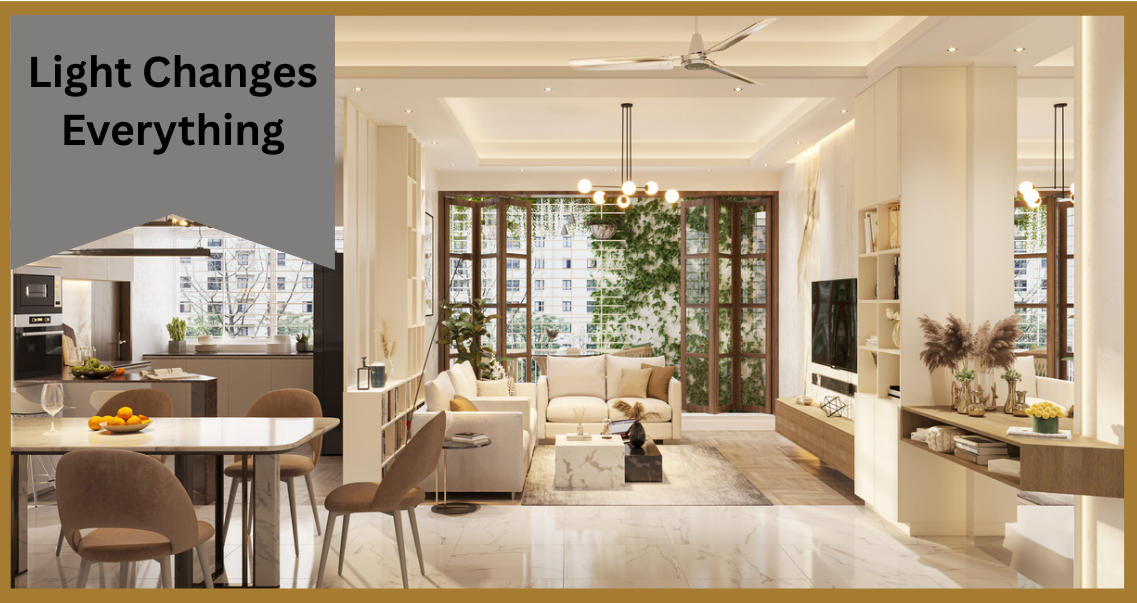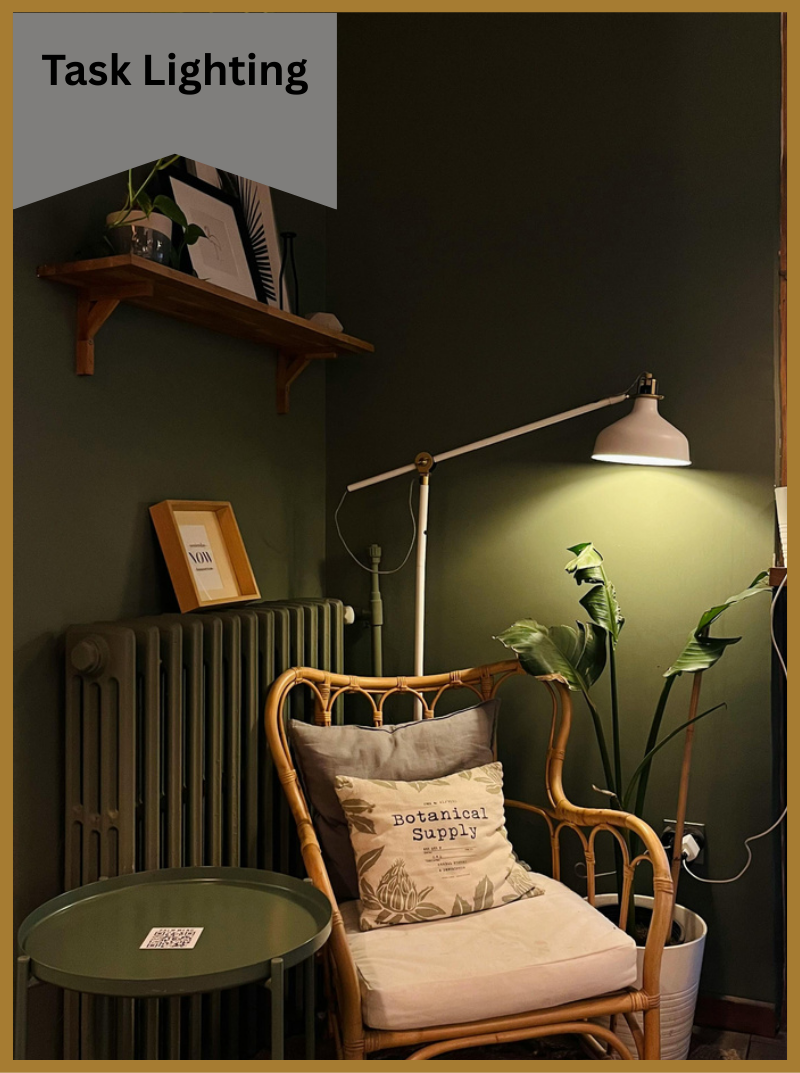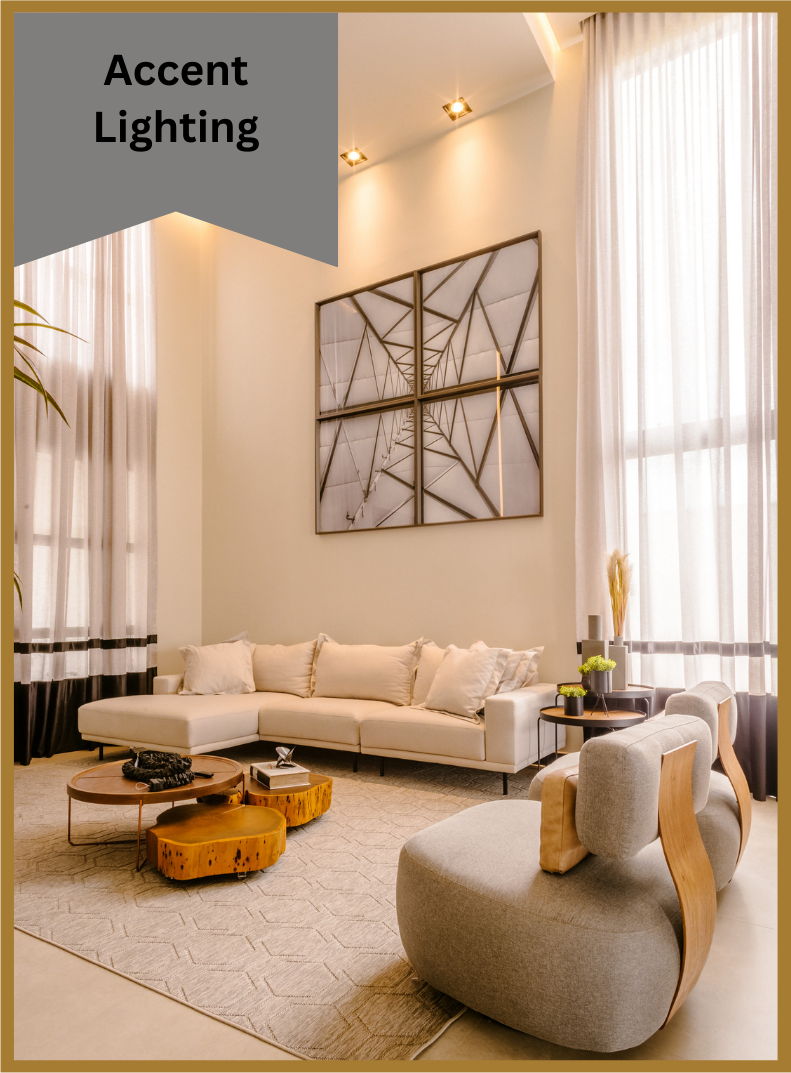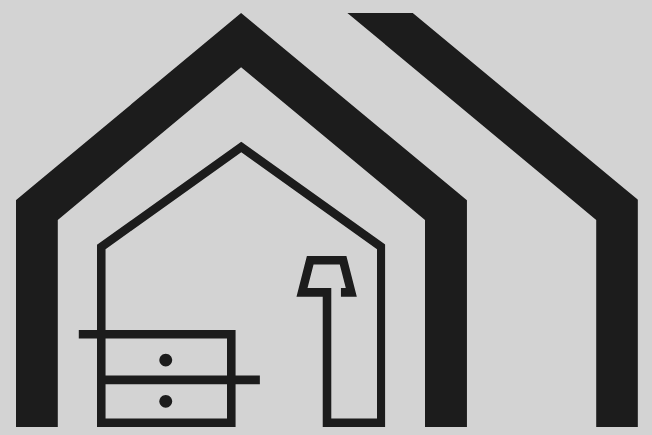Light Changes Everything: How to Make a Room Feel Alive
Lighting is often the unsung hero of interior design.
You can invest in beautiful furniture, select the perfect paint color, and style every surface with care, but without the right lighting, the room can still fall flat.
Lighting does more than help you see. It sets the mood, enhances color and texture, and brings a quiet energy into the space. When done well, it creates a feeling you cannot quite name but instantly recognize. It is that moment when a room suddenly feels warm, alive, and pulled together.
As a designer, I can’t count how many times I walk into a client’s home and find stunning pieces, thoughtful layouts, and great taste, and yet the space still feels off. Most of the time, the issue is not the furnishings or even the layout. It is the
lighting.
What is layered lighting?
Layered lighting refers to using multiple types of light in a space rather than relying on one central source. It’s one of the most transformative elements in design, yet one of the most commonly overlooked by homeowners.
In fact, I would estimate that 90% of the homes I walk into have only ambient lighting, that is your standard overhead fixture or recessed cans. Sometimes there are a few scattered table lamps, but when I ask clients how they actually use the room, whether they read, work, entertain, or unwind, the lighting often has nothing to do with those needs.
Even the lamps present are rarely used for
task lighting. More often than not, they are used as accessories rather than tools to support function. That is where layered lighting changes everything.
Here are the three types of lighting and why they matter
Let’s break it down with real examples.
- Ambient Light
This is your main source of general lighting. Think of it as your room’s base layer, overhead fixtures, recessed cans, or even a large pendant. It sets the overall tone but but can be harsh or one-dimensional on its own. It should never be the only light source. Without additional layers, a room can feel flat, cold, or overly bright.
- Task Lighting
Task lighting is exactly what it sounds like, functional lighting that supports specific activities like reading, cooking, or writing. Floor lamps next to a reading chair, under-cabinet lighting in a kitchen, or pendants over an island all fall into this category. These lights should be chosen based on how you use a space by improving visibility where you need it and helping to reduce eye strain.
- Accent Lighting
Accent lighting is all about atmosphere and artistry. It
highlights details, artwork, bookshelves, textured walls, and adds visual warmth. It also shapes shadows, which is just as important as light in creating depth and emotion. Accent lighting can as be as simple as wall sconces, picture lights, and uplighting hidden behind furniture to bring personality into your space.
How important is color temperature in lighting design?
This is one of the most common questions I get, and a perfect example of where a little education goes a long way.
Color temperature, measured in Kelvin (K), determines how warm or cool your light feels.
- Warm light (2700K–3000K): This soft, golden light mimics sunrise or candlelight. It’s cozy, comforting, and perfect for spaces meant for relaxation — like bedrooms, living rooms, or dining areas.
- Cool light (4000K and up): This crisp, blue-toned light feels like daylight and is energizing. It’s often used in kitchens, laundry rooms, or offices where visibility is key.
Clients often say, “I like the yellow light, but my husband prefers the blue.” What they are really talking about is color temperature, they just don’t have the language for it yet. Others tell me they choose bright, cool light because they are struggling to see as they age. That makes sense, our eyes change over time. But that does not mean we need to flood the room with glare. There are solutions that support vision without sacrificing warmth, comfort, or style.
Lighting can really affect mood!
Have you ever heard of your circadian rhythm? Our bodies are wired to respond to natural light. Cooler, brighter light in the morning helps us feel alert. Warmer, softer light in the evening tells our brains it’s time to wind down.
By letting your interior lighting follow the rhythm of the day, you’re not just improving the look of your home, you are supporting your well-being, sleep cycles, and daily energy.
PRO TIP: Use dimmers to control brightness throughout the day, and vary your lighting height (floor lamps, table lamps, overhead) to add softness and dimension.
It is never too late to make changes, start small and think intentionally. Swap harsh white bulbs for warm-toned ones. Add a lamp or two at eye level in places where you spend time. If your space feels too bright or too stark at night, it might not be your furniture but your lighting that is off.
Lighting does not have to be complicated, just considered. The right lighting will make your favorite pieces look better, your walls feel richer, and your entire space more welcoming.
Because the right light does more than brighten a room. It brings it to life.
Tina Wright launched The Design Journal in 2024 as a space to share expert insights, timeless design principles, and practical tips for creating beautiful functional homes. In 2025 she expanded her reach by writing a monthly local newspaper column, offering readers a deeper dive into the art of interior design. As the owner and principal designer of Fine Interiors of WNC, Tina brings over 25 years of experience to her work, transforming homes across the Southeastern U.S. with her client-focused approach and passion for design. Whether through her newspaper column, blog, or one-on-one consultation, she is dedicated to helping homeowners make timeless, thoughtful, design choices.
Frequently Asked Questions:
FAQ: Why does my room still feel flat or cold, even after I’ve added light fixtures?
Answer: Chances are, the light temperature or placement is off, or you are missing a layer. A room with only overhead lighting can feel harsh or sterile. Adding warm-tone light bulbs (around 2700K–3000K), dimmers, and a few low-glow sources like table or floor lamps adds softness. Lighting is emotional. It should create warmth, support daily routines, and enhance architectural rhythm.
FAQ: I have recessed lights. Isn’t that enough?
Answer: Recessed lights provide general lighting, but they often cast shadows, especially if they are too few or poorly placed. You need to supplement them with task and accent lighting to create balance and depth. For example, add sconces, pendants, or a chandelier for ambiance, and use lamps or under-cabinet lighting to eliminate dark corners or workspace shadows.
FAQ: What’s the best way to light artwork without overpowering the room?
Answer: Picture lights, ceiling-mounted adjustable spotlights, or wall washers work beautifully. The key is subtlety. The goal is to gently highlight the art, not wash it out or create glare. A designer can help you select the right angle and temperature , often a warm white (around 3000K) bulb is best to bring out the natural tones without looking too stark.
FAQ: Can lighting really change how paint colors or fabrics look?
Answer: Absolutely, and dramatically! A paint color that looks soft and warm in natural daylight can turn muddy or harsh under the wrong artificial lighting. That’s why testing swatches under day and night conditions is so important. Also, warm bulbs (2700K–3000K) tend to enhance neutrals and earthy tones, while cooler bulbs can make whites look crisper or blues look icy.
FAQ: My ceiling is low. What kind of lighting works best without making the room feel cramped?
Answer: In rooms with low ceilings, avoid bulky or hanging fixtures unless they are centered over a table or bed. Opt for semi-flush mounts, wall sconces, and uplighting like floor lamps that wash light up the walls. These visually lift the space and keep it from feeling closed in. Vertical lighting, like tall lamps or uplights, draws the eye upward and creates a sense of airiness.
We Would Love to Hear From You!
Have you ever faced a design challenge in your home, big or small, and found a creative solution that worked for you? Whether it was a clever layout tweak, a bold color choice, or a DIY fix that made all the difference, your experience might inspire someone else. Feel free to share with me, send photos to Tina at fineinteriors@msn.com. I always enjoy hearing from readers and clients, it is how the best design conversations begin.







